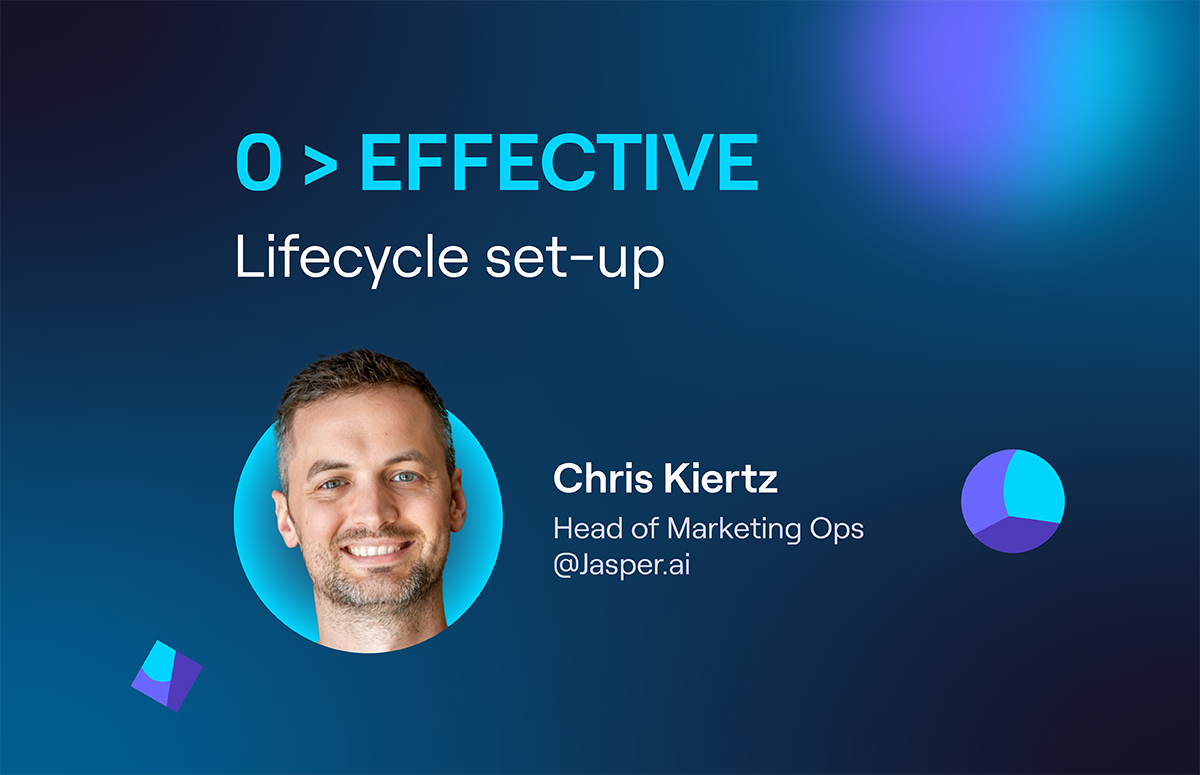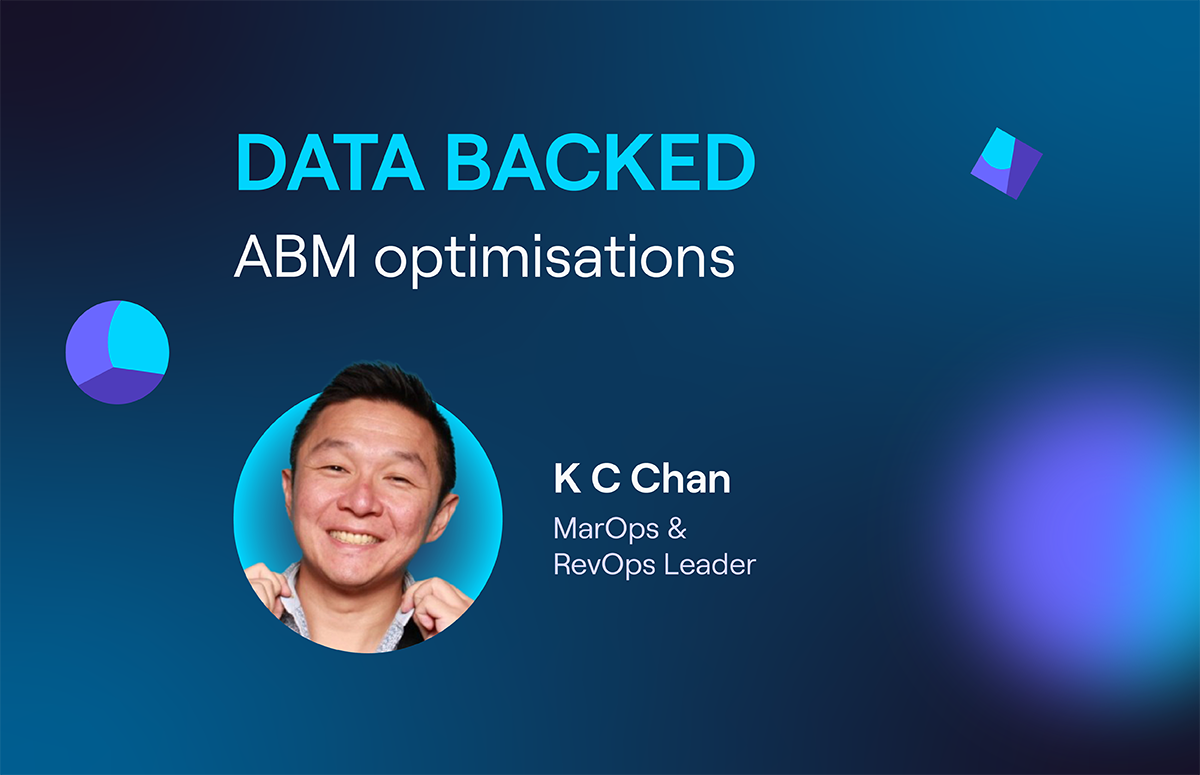FIX YOUR FUNNEL PLAYBOOK
Gaining trustworthy data with alignment and metric tracking
Are your revenue teams talking in different languages when discussing the same metrics?
Misalignment on KPIs and metrics can kill progress across the marketing and sales teams and foster resentment.
Here's how Julien Hennico, Marketing Operations Consultant, helped his client align on key metrics through the sales funnel to ensure both teams were singing from the same hymn sheet.
Industry and company size
-
200 employees
-
Artificial Intelligence
Funnel stage
-
MQL to SQO
Playbook impact
-
Reliable data across the revenue org
PLAYBOOK HOST

Julien Hennico
Marketing Operations Consultant
RECOMMENDED FOR
Let's jump in 👇🏻
💡 What was the problem?
As a Marketing Operations consultant, Julien works with companies to optimise their processes through data. As he explained:
“I look at the effects of different campaigns, analysing clicks and form submissions and understand how much of that ends up as an opportunity or meeting booked. That way, we can optimise channels and campaigns and know what is worth investing in.”
Yet, when tracking this data, Julien often sees a misalignment of the key data definitions between marketing and sales.
When Julien started working with this client, the MQLs were disorganised and measured differently across different dashboards and forecasts.
Different flows in Salesforce had overwritten the data and definitions behind these MQLs.
As a result, all the information and data in these fields was unreliable, and the business was building its strategies and forecasts on inaccurate information.
Stakeholders could not measure the impact of a specific campaign and the revenue or leads generated.
💡 Defining and tracking qualification stages
The key was to align stakeholders on key metrics. That way, if marketing and sales agreed on the fields and information that defined an MQL, that then became a qualified lead in their system. As Julien shared:
“If you’re aligned on what an MQL is, you can agree to have this as a target and goal. It’s important to look at both MQL conversion rates and unqualified and disqualified leads. That way, you can understand why campaigns worked, and others didn’t and adjust accordingly.”
“Whilst tracking campaign data might not be helpful for the current campaign, it will help when building future ones.”
Here, the disqualification process can also be analysed to inform segmentation and help to understand who should be excluded from targeting.
💡 Finding the metrics that matter
When creating and building the campaign, whilst planning the content, the visuals, and the targeting is important, you also have to understand what results you want to track and how you will track them.
If you’re not doing this, you are not prepared to launch the campaign, as you won’t be able to measure and understand its impact.
Metrics-wise, for Julien, leads are, of course, important. If you have a form linked to your content, it’s essential to understand how to track the impact of that content in your sales funnel. Julien explained:
“A lot of behaviour happens online, so tracking which piece of content brought a lead to a landing page and UTM tracking is key.”
“You also need to be able to track the whole journey across different touchpoints. No single action will result in a sale, and many marketers only have one piece of that picture, but tracking the entire online journey is important.”
“Everything happening online is nice to know so you can figure out how to optimise your landing pages. But these can often become vanity metrics. Whilst you might generate lots of leads from a nice landing page, messaging and CTAs if you generate 1,000 leads and none become revenue makers, it’s useless. So whilst this is interesting to optimise, it’s not the most important metric.”
Instead, analyse how many of the leads you have generated are receiving the proper grading and are qualified to speak to sales. That’s why this definition alignment is essential.
💡 Looking down the funnel
Following a conversation with an SDR or BDR, a lead will go down three paths: either they’re going to be disqualified, be put back in the nurture cycle campaign or be qualified and put in front of an Account Executive and move on with the negotiation.
Then, through the sales funnel and looking at the conversion from MQL to SAL to SQL to the opportunity created, marketing can understand the impact of its actions on the pipeline generated through these campaigns.
The other angle is understanding how much marketing has influenced the contact inside the opportunity.
When sales cycles are long and the product is complex, you can’t measure your marketing performance solely by acquisition. You must also consider your impact on open deals and how the materials you create have helped your sales team close their deals.
If you’re not having this vision, you’re losing a big part of your role and the impact.
💡 What were the results?
As Julien explained:
“Tracking the data and creating this key definition alignment helped us understand how wrong we were in our original forecasting and measurement.”
“It was complicated because when people started reporting with their own filters, their measurements were wrong because they were misaligned.”
Doing this meant Julien could guarantee everyone’s confidence when defining an MQL. Each stakeholder relied on this figure to measure their activity, but none trusted its definition.
Julien fixed the root of the problem to ensure everyone’s information was reliable. The stakeholders could now trust their data, their dashboards, and the number of MQLs they had generated and could iterate and improve their campaigns accordingly:
“Whilst they might not be happy with the content and the number, at least they knew exactly what the number is and how they can adjust to increase this number.”
.png)

